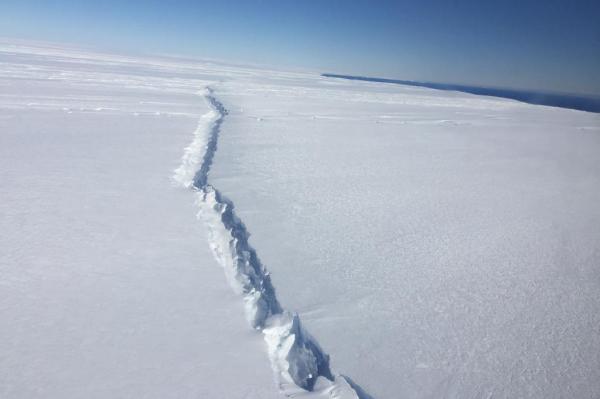
COLUMBUS, Ohio, Nov. 28 (UPI) — The West Antarctic Ice Sheet is breaking apart from the inside out as warming ocean water weakens the coastal ice shelf from beneath.
In 2015, a massive iceberg cleaved from Pine Island Glacier, one of two major glaciers that form the West Antarctic Ice Sheet. Image analysis by scientists at Ohio State University revealed a rift forming 20 miles inland two years prior to the breakaway.
Between 2013 and 2015, the rift propagated until a 225-square-mile chunk of the ice shelf separated from the rest of the glacier.
“It’s generally accepted that it’s no longer a question of whether the West Antarctic Ice Sheet will melt, it’s a question of when,” Ian Howat, associate professor of earth sciences at Ohio State, said in a news release. “This kind of rifting behavior provides another mechanism for rapid retreat of these glaciers, adding to the probability that we may see significant collapse of West Antarctica in our lifetimes.”
Scientists have observed inland cleaving in Greenland. The latest research — detailed in the journal Geophysical Research Letters — suggests a similar pattern of rifting is occurring in Antarctica.
“Rifts usually form at the margins of an ice shelf, where the ice is thin and subject to shearing that rips it apart,” Howat explained. “However, this latest event in the Pine Island Glacier was due to a rift that originated from the center of the ice shelf and propagated out to the margins. This implies that something weakened the center of the ice shelf, with the most likely explanation being a crevasse melted out at the bedrock level by a warming ocean.”
The rift began at the bottom of a glacial valley. Scientists suspect ocean water may have infiltrated deep inland and began eroding the ice shelf from below. Much of the Pine Island Glacier actually sits below sea level.
“The really troubling thing is that there are many of these valleys further up-glacier,” Howat said. “If they are actually sites of weakness that are prone to rifting, we could potentially see more accelerated ice loss in Antarctica.”
Scientists spotted a newly formed rift on the Pine Island Glacier ice shelf during an aerial survey on November 4, 2016.






